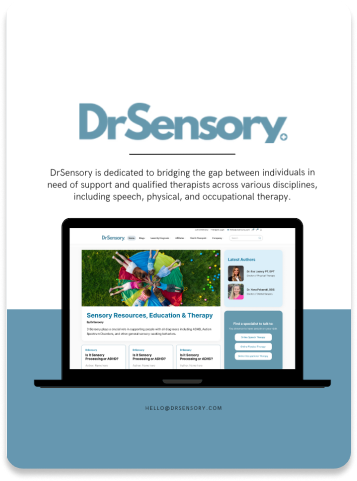
Blog
Best Keywords for Physical Therapy SEO (With Examples)
Expert web designers ensure the site and software is easy to use.Best Keywords for Physical Therapy SEO (With Examples)
Physical therapy practices that rank at the top of search results don’t get there by accident. They’ve mastered the art of physical therapy SEO keywords, understanding exactly what their potential patients search for and how to capture that traffic. The difference between practices that struggle with online visibility and those that attract a steady stream of new patients often comes down to one thing: keyword strategy.
This comprehensive guide will teach you everything about keyword research for PT practices. You’ll discover the most effective tools for finding profitable keywords, learn how to target local intent searches, identify service-based keywords that convert, and conduct competitive analysis that reveals untapped opportunities. By the end of this post, you’ll have a complete PT keyword strategy that drives more qualified traffic to your website.
Whether you’re a solo practitioner or managing multiple clinic locations, the keyword strategies in this guide will help you dominate search results in your area and attract patients who are actively seeking your services.
Physical Therapy Marketing & SEO: A Guide to Managing Customer Data for Growth

Understanding Physical Therapy SEO Keywords
Physical therapy SEO keywords are the specific terms and phrases potential patients type into search engines when looking for PT services. These keywords fall into several categories, each serving different stages of the patient journey and requiring unique optimization approaches.
Informational Keywords capture people researching their symptoms or treatment options. Examples include “what causes lower back pain” or “how long does physical therapy take.” These keywords have high search volume but lower immediate conversion rates.
Navigational Keywords target people looking for specific practices or practitioners. These might include your practice name, competitor names, or branded terms like “TheraPro360 physical therapy.”
Commercial Keywords indicate purchase intent and represent your highest-value targets. These include terms like “physical therapy near me,” “best physical therapist,” or “sports injury treatment.”
Local Keywords combine service terms with geographic modifiers. Examples include “physical therapy Denver” or “PT clinic downtown Chicago.” These keywords are essential for practices serving specific geographic areas.
Understanding keyword intent helps you create content that matches what searchers actually want, improving both your rankings and conversion rates.
Local SEO for Physical Therapists: How to Dominate in Your Area
How to Build a Physical Therapy Website That Ranks and Converts
Essential Keyword Research Tools for Physical Therapists
Effective keyword research requires the right tools to uncover search volumes, competition levels, and related terms that your potential patients actually use.
Google Keyword Planner
Google Keyword Planner remains the gold standard for keyword research because it provides data directly from Google’s search database. This free tool shows search volumes, competition levels, and suggested bid ranges for paid advertising.
To access Keyword Planner, you need a Google Ads account, but you don’t need to run active campaigns. Start by entering broad terms like “physical therapy” or “back pain treatment” to discover related keywords and their monthly search volumes.
Pay attention to the competition level indicators. High competition doesn’t necessarily mean SEO difficulty—it refers to paid advertising competition. However, highly competitive keywords often indicate valuable, high-converting terms.
Ahrefs Keyword Explorer
Ahrefs provides comprehensive keyword data including search volume, keyword difficulty scores, and SERP analysis. The tool’s keyword difficulty metric specifically measures SEO competition, helping you identify terms you can realistically rank for.
Use Ahrefs to analyze competitor keywords by entering their domains. This reveals which terms drive traffic to competing practices and identifies gaps in your own keyword strategy.
The “Questions” filter in Ahrefs helps you discover long-tail keywords phrased as questions. These often align with voice search queries and provide excellent content opportunities.
SEMrush Magic Keyword Tool
SEMrush excels at competitive analysis and local keyword research. The Magic Keyword tool generates thousands of related terms and provides detailed competition analysis.
Use the “Questions” and “Related” tabs to find long-tail variations of your primary keywords. These longer phrases often have lower competition and higher conversion rates.
SEMrush’s Position Tracking tool monitors your rankings for target keywords over time, helping you measure the effectiveness of your optimization efforts.
Free Keyword Research Options
Google Autocomplete provides valuable keyword insights by showing what real users search for. Start typing “physical therapy” in Google’s search box and note the suggested completions.
Answer the Public visualizes keyword data in easy-to-understand formats. Enter a broad term like “physical therapy” to see hundreds of related questions, prepositions, and comparisons.
Google Trends shows search volume trends over time and geographic distribution of searches. This helps identify seasonal opportunities and regional variations in search behavior.

High-Value Physical Therapy Keywords by Category
Different types of keywords serve different purposes in your SEO strategy. Understanding these categories helps you create comprehensive content that captures traffic throughout the patient journey.
Primary Service Keywords
These broad terms describe your core services and typically have high search volumes but also high competition.
- Physical therapy (49,500 monthly searches)
- Physical therapist (27,100 monthly searches)
- PT clinic (8,100 monthly searches)
- Rehabilitation services (5,400 monthly searches)
- Physical medicine (4,400 monthly searches)
While these keywords are important for your overall SEO strategy, they’re extremely competitive and may be difficult to rank for without significant authority and optimization efforts.
Condition-Specific Keywords
These keywords target specific conditions or injuries that physical therapists treat. They often have moderate search volumes with better conversion rates.
- Back pain treatment (22,200 monthly searches)
- Knee injury rehabilitation (8,100 monthly searches)
- Sports injury therapy (6,600 monthly searches)
- Shoulder pain physical therapy (5,400 monthly searches)
- Neck pain treatment (4,400 monthly searches)
- Hip replacement rehab (3,600 monthly searches)
- ACL recovery (2,900 monthly searches)
- Carpal tunnel therapy (2,400 monthly searches)
These keywords represent people with specific problems who are actively seeking solutions. Creating detailed content around these conditions often generates high-quality traffic.
Treatment-Specific Keywords
These terms focus on specific treatment methods or techniques, attracting patients interested in particular approaches.
- Dry needling therapy (12,100 monthly searches)
- Manual therapy (9,900 monthly searches)
- Ultrasound therapy (8,100 monthly searches)
- Cold laser therapy (6,600 monthly searches)
- Graston technique (4,400 monthly searches)
- IASTM therapy (2,900 monthly searches)
- Cupping therapy (18,100 monthly searches)
- Kinesio taping (14,800 monthly searches)
Patients searching for specific treatments often have previous experience with physical therapy or specific provider recommendations, making them high-quality prospects.
Long-Tail Keywords with High Intent
Long-tail keywords are longer, more specific phrases that often indicate strong purchase intent. While individual search volumes are lower, these keywords typically convert better and face less competition.
- Physical therapy for lower back pain near me (880 monthly searches)
- Best physical therapist for knee replacement (720 monthly searches)
- Sports physical therapy clinic downtown (590 monthly searches)
- Physical therapy after shoulder surgery (480 monthly searches)
- Chronic pain physical therapy specialists (390 monthly searches)
These keywords represent people with specific needs who are ready to take action. They’re excellent targets for service pages and blog content.
Top Physical Therapy Marketing Mistakes to Avoid (And What to Do Instead)

Local Intent Keywords: Capturing Your Geographic Market
Local keywords are crucial for physical therapy practices because patients typically seek nearby providers. These keywords combine your services with geographic modifiers to capture local search traffic.
City and Regional Modifiers
Start with your primary service area and expand to nearby communities where you want to attract patients.
- Physical therapy [Your City]
- PT clinic [Your City]
- Physical therapist near [Your City]
- [Your City] sports injury clinic
- Back pain treatment [Your City]
Research surrounding areas and neighborhoods to identify expansion opportunities. Many practices successfully attract patients from adjacent communities by targeting their specific keywords.
Neighborhood and Landmark Keywords
People often search using familiar local landmarks or neighborhood names instead of official city names.
- Physical therapy downtown [City]
- PT clinic near [Major Hospital]
- Physical therapist [Neighborhood Name]
- Sports therapy [Mall/Shopping Center Area]
Use local knowledge to identify how residents refer to different areas of your city. These hyper-local keywords often have less competition while maintaining strong relevance.
“Near Me” Optimization
“Near me” searches continue growing as mobile and voice search adoption increases. These searches indicate immediate intent and high conversion potential.
- Physical therapy near me
- Physical therapist near me
- PT clinic near me
- Back pain treatment near me
- Sports injury therapy near me
Optimize your Google Business Profile and website content to capture these searches. Include location-specific content and ensure your NAP (Name, Address, Phone) information is consistent across all platforms.
Service-Based Keywords That Convert
Service-based keywords target specific treatments or specialties within your practice. These keywords often attract patients with clearly defined needs and strong conversion intent.
Specialty Treatment Keywords
If your practice offers specialized services, target keywords that highlight these unique capabilities.
- Vestibular rehabilitation therapy (2,900 monthly searches)
- Pelvic floor physical therapy (14,800 monthly searches)
- Neurological physical therapy (1,900 monthly searches)
- Pediatric physical therapy (6,600 monthly searches)
- Geriatric physical therapy (1,600 monthly searches)
- Aquatic therapy (4,400 monthly searches)
Specialized keywords often have lower competition because fewer practices offer these services. They also attract patients willing to travel further for specialized care.
Post-Surgery Rehabilitation Keywords
Post-surgical patients represent a valuable market segment with clear treatment needs and often good insurance coverage.
- Post-surgical rehabilitation (2,400 monthly searches)
- Hip replacement physical therapy (1,900 monthly searches)
- Knee replacement rehab (3,600 monthly searches)
- Rotator cuff surgery recovery (1,600 monthly searches)
- ACL reconstruction therapy (1,300 monthly searches)
These keywords work well for partnerships with orthopedic surgeons and can generate steady referral traffic.
Worker’s Compensation Keywords
Work-related injuries represent another targeted market segment with specific keyword patterns.
- Work injury rehabilitation (880 monthly searches)
- Worker’s compensation physical therapy (720 monthly searches)
- Occupational injury treatment (590 monthly searches)
- Return to work program (480 monthly searches)
These keywords may have lower search volumes but often represent higher-value patients with guaranteed payment through worker’s compensation insurance.
Choosing the Right Practice Management and CRM Tools for Your PT Clinic
What Is Customer Data Management in Healthcare Marketing?
Best CRM Tools and Customer Database Management Software for Small Practices

Competitive Analysis for PT Keyword Strategy
Understanding your competitors’ keyword strategies reveals opportunities and helps you identify gaps in your own approach. Competitive analysis should be an ongoing process that informs your content and optimization decisions.
Identifying Your SEO Competitors
Your SEO competitors may differ from your direct business competitors. Use keyword research tools to identify which websites rank for your target keywords.
Search for your primary keywords and analyze the top 10 results. Look for patterns in the types of content that rank well and the keyword strategies successful competitors use.
Consider different types of competitors:
- Direct competitors (other PT practices in your area)
- Indirect competitors (chiropractors, massage therapists, wellness centers)
- Content competitors (medical websites, health blogs)
Competitor Keyword Gap Analysis
Tools like Ahrefs and SEMrush offer keyword gap analysis features that show which keywords your competitors rank for that you don’t.
Enter your website and up to four competitor domains to see:
- Keywords they rank for that you don’t target
- Keywords where they outrank you
- Keywords where you have opportunities to improve
This analysis often reveals valuable keyword opportunities you might have missed in your initial research.
Analyzing Competitor Content Strategies
Examine the types of content your competitors create and how they target keywords within that content.
Look for:
- Blog topics and keyword integration
- Service page optimization
- Local landing pages
- FAQ sections and their keyword focus
Identify content gaps where competitors haven’t fully addressed certain keywords or user needs. These gaps represent opportunities for you to create superior content that captures search traffic.
Monitoring Competitor Rankings
Set up ranking monitoring for your key competitors using tools like SEMrush Position Tracking or Ahrefs Rank Tracker. This ongoing monitoring helps you:
- Identify when competitors gain or lose rankings
- Spot new keyword opportunities
- Understand seasonal ranking patterns
- React quickly to competitive threats
Regular competitive monitoring should inform your ongoing keyword strategy and content planning.
Keyword Research Best Practices for Physical Therapists
Effective keyword research requires systematic approaches that uncover the most valuable opportunities for your specific practice and market.
Understanding Search Intent
Different keywords indicate different user intents, requiring different content approaches:
Informational Intent: Users seeking knowledge about conditions, treatments, or symptoms
- “What is physical therapy”
- “How to treat back pain”
- “Physical therapy exercises for knee pain”
Commercial Investigation: Users comparing options or researching providers
- “Best physical therapist near me”
- “Physical therapy reviews”
- “Sports injury clinic comparison”
Transactional Intent: Users ready to book appointments or contact providers
- “Physical therapy appointment”
- “Book PT session”
- “Physical therapist consultation”
Match your content type to search intent for better user satisfaction and conversion rates.
Balancing Search Volume and Competition
High search volume keywords attract more traffic but also face more competition. Low competition keywords may be easier to rank for but generate less traffic.
Focus on finding keywords with:
- Sufficient search volume to impact your business
- Reasonable competition levels for your website’s authority
- Strong alignment with your services and expertise
- Clear commercial or local intent
Use keyword difficulty scores from tools like Ahrefs or SEMrush to assess your ranking chances realistically.
Seasonal Keyword Opportunities
Physical therapy demand often follows seasonal patterns related to sports activities, weather changes, and lifestyle factors.
Research seasonal trends using Google Trends:
- Summer: Sports injuries, outdoor activity injuries
- Fall: Back-to-school sports injuries, repetitive strain from desk work
- Winter: Slip and fall injuries, reduced activity-related stiffness
- Spring: Preparation for summer activities, spring cleaning injuries
Plan your content calendar around these seasonal opportunities to capture timely search traffic.

Building Your PT Keyword Strategy
Creating an effective keyword strategy requires organizing your research into actionable plans that guide your content creation and optimization efforts.
Keyword Mapping and Organization
Organize your keywords into logical groups based on:
- Search intent (informational, commercial, transactional)
- Service categories (general PT, sports therapy, post-surgical)
- Geographic targeting (city, neighborhood, regional)
- Competition levels (primary targets, quick wins, long-term goals)
Create a spreadsheet that tracks:
- Target keywords
- Monthly search volume
- Competition difficulty
- Current rankings
- Target pages or content
- Priority level
Content Planning Based on Keywords
Use your keyword research to inform your content strategy across different website sections:
Service Pages: Target primary service keywords and local modifiers
Blog Content: Address informational keywords and long-tail phrases
FAQ Pages: Target question-based keywords and voice search queries
Location Pages: Focus on geo-specific keywords and local intent
Plan content that naturally incorporates target keywords while providing genuine value to your audience.
Tracking and Measuring Success
Implement tracking systems to measure the effectiveness of your keyword strategy:
- Set up Google Search Console to monitor keyword rankings and click-through rates
- Use Google Analytics to track organic traffic and conversions
- Monitor phone calls and appointment bookings generated from organic search
- Track local search visibility through Google Business Profile insights
Regular monitoring helps you identify successful strategies to expand and underperforming areas that need adjustment.
Common Keyword Research Mistakes to Avoid
Many physical therapy practices make predictable keyword research mistakes that limit their SEO success.
Targeting Only High-Volume Keywords: While appealing, high-volume keywords often face intense competition and may not convert as well as more specific alternatives.
Ignoring Local Intent: Physical therapy is inherently local, so failing to target location-based keywords misses valuable opportunities.
Keyword Stuffing: Overusing keywords in content hurts readability and can trigger Google penalties. Focus on natural integration that serves user needs.
Neglecting Long-Tail Keywords: Longer, more specific phrases often convert better and face less competition than broad terms.
Not Updating Keyword Strategy: Search behaviors evolve, new competitors emerge, and your practice offerings change. Regular keyword research updates keep your strategy current.
Advanced Keyword Research Techniques
Once you’ve mastered the basics, advanced techniques can uncover additional opportunities and refine your strategy.
Voice Search Optimization
Voice searches tend to be longer and more conversational than typed queries. Optimize for natural language patterns:
- “Where can I find a physical therapist near me?”
- “What’s the best treatment for lower back pain?”
- “How long does physical therapy take for knee surgery?”
Create FAQ content that directly answers these conversational queries.
Featured Snippet Opportunities
Identify questions your potential patients ask and create content that directly answers them in structured formats. Featured snippets can dramatically increase your visibility for target keywords.
Look for keywords that trigger featured snippets in search results, then create better, more comprehensive answers than currently featured content.
International and Multi-Location Strategies
If you serve multiple locations or different language populations, develop location-specific keyword strategies:
- Research keywords in different languages if you serve non-English speaking populations
- Create separate keyword lists for each service location
- Consider cultural differences in how people search for healthcare services
How to Collect, Store, and Use Patient Data Ethically and Effectively

Your Keyword Research Action Plan
Transform your keyword research into concrete actions that improve your search visibility:
- Conduct Initial Keyword Research: Use the tools and techniques outlined in this guide to identify 50-100 target keywords across different categories.
- Analyze Competition: Research competitors ranking for your target keywords and identify content gaps you can fill.
- Create Keyword Map: Organize keywords by intent, competition, and priority to guide your content creation efforts.
- Implement Tracking: Set up monitoring systems to measure your progress and identify successful strategies.
- Plan Content Calendar: Use keyword research to inform your ongoing content strategy and optimization efforts.
Effective physical therapy SEO keywords are the foundation of online visibility and patient acquisition. By understanding what your potential patients search for and creating valuable content that addresses their needs, you build sustainable organic traffic that grows your practice.
Remember that keyword research isn’t a one-time activity—it’s an ongoing process that should evolve with your practice, your market, and search engine algorithms. Regular research and optimization ensure you stay ahead of competitors and continue attracting qualified patients through search.
Start with the keyword categories most relevant to your practice, implement systematic research processes, and gradually expand your strategy as you gain experience and see results. The investment in proper keyword research pays dividends through increased visibility, more qualified traffic, and ultimately, practice growth.
Why TheraPro360?
Run your practice with simplicity with our streamlined scheduling, seamless telehealth integration, centralized patient portals, intuitive calendar management, and automated invoicing.
Get Started TodayAuthors and Contributors

Eva Lassey PT, DPT
Co-Founder of TheraPro360
Dr. Eva Lassey PT, DPT has honed her expertise in developing patient-centered care plans that optimize recovery and enhance overall well-being. Her passion for innovative therapeutic solutions led her to establish DrSensory, a comprehensive resource for therapy-related diagnoses and services.

Irina Shvaya
Co-Founder of TheraPro360
Irina Shvaya is the Founder of eSEOspace, a Software Development Company. She combines her knowledge of Behavioral Neuroscience and Psychology to understand how consumers think and behave.
Contents

Build Your Therapy Practice Online With a Website That Actually Works
At TheraPro360, we’re more than just software — we’re your all-in-one partner for practice management and online growth. From custom websites to SEO and marketing, we help therapists modernize their online presence and attract more patients.
Whether you're starting fresh or your current site needs a serious upgrade, our streamlined, white-glove process takes the stress out of getting results — so you can focus on what matters most: your patients.
Ready to Grow Your Practice?
👉 Schedule Your Free Discovery Call Now
Let’s build your online presence — together.










